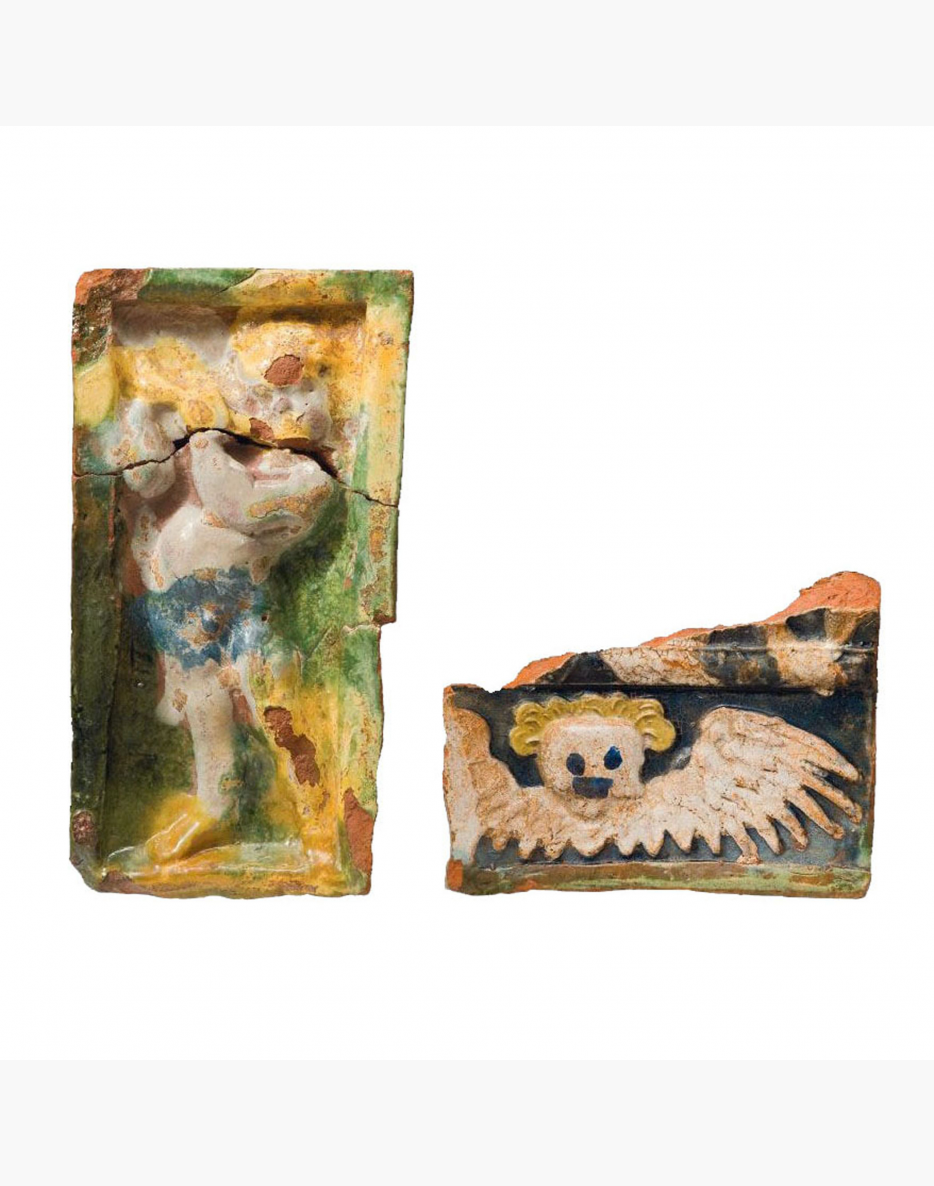16th c. – 17th c.
Glazed clay. Lithuanian National Museum
The convent buildings were heated by various means, such as tile and hypocaust stoves. The former palace of Eustachijus Valavičius, where the first nuns took residence, was already equipped with tile stoves decorated with coloured glazed tiles. The stove doubled as an interior decoration. The uniqueness of the kiln stemmed from the proportions of its various parts, combinations of tiles and other details: cornices, friezes, crowns. Locally made ornate tiles featured reliefs and would often use green, blue, or yellow glaze. The decorative patterns of the tile panels varied from geometric to floral, to figurative and could be both religious and secular in content.
A hypocaust stove discovered in the convent’s cellar under the refectory, was built in the middle or the second half of the 17th century. When the stove was heated, hot air would circulate through canals and thus heat several rooms. Its mouth was installed on the outside of the building.
